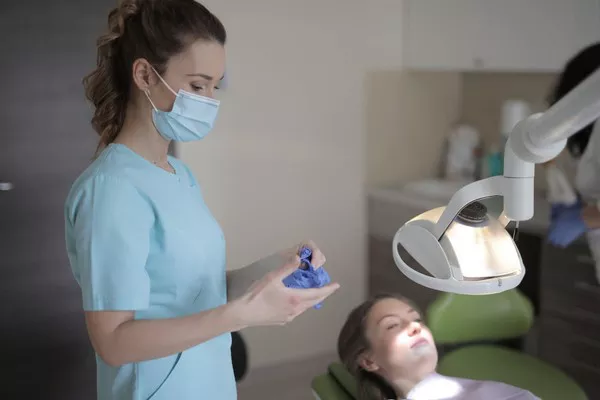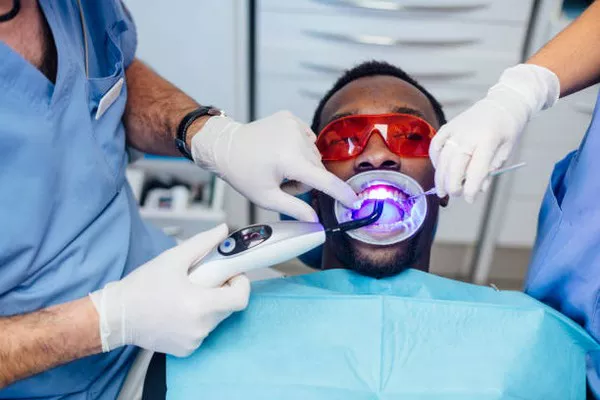Maintaining a bright and uniform smile can be challenging, especially when dental restorations like caps are involved. Understanding how these restorations interact with whitening treatments is essential for anyone considering teeth whitening. This article delves into the nature of dental caps, their limitations concerning whitening, and how to manage their appearance effectively.
Explanation of Dental Caps
Dental caps, also known as dental crowns, are protective covers placed over damaged or decayed teeth to restore their shape, size, strength, and appearance. They are typically made from materials such as porcelain, ceramic, or composite resin. These materials are chosen for their durability and natural appearance, closely mimicking the look of natural teeth.
Dental caps are used in various situations, including:
- Protecting a weak tooth from breaking or holding together parts of a cracked tooth.
- Restoring an already broken tooth or a tooth that has been severely worn down.
- Covering and supporting a tooth with a large filling when there isn’t much tooth left.
- Holding a dental bridge in place.
- Covering misshaped or severely discolored teeth.
- Covering a dental implant.
- Making a cosmetic modification.
The materials used for dental caps are selected for their strength and aesthetic qualities, ensuring that they blend seamlessly with natural teeth.
Whitening Limitations
A common question patients ask is whether dental caps can be whitened. The straightforward answer is no. Dental caps cannot be whitened using traditional teeth whitening methods. This limitation arises from the nature of the materials used to make these caps. Porcelain and composite resins are highly durable and stain-resistant, which is why they are used in dental restorations. However, these materials do not respond to whitening agents like natural tooth enamel does.
Teeth whitening treatments typically involve bleaching agents such as hydrogen peroxide or carbamide peroxide. These agents penetrate the porous enamel of natural teeth, breaking down stains and lightening the color of the teeth. Dental caps, however, are non-porous and impervious to these bleaching agents, meaning their color remains unchanged after whitening treatments.
see also: What Does A Blue Led Light Do For Teeth Whitening
Whitening Natural Teeth
While dental caps themselves cannot be whitened, it is possible to whiten the natural teeth surrounding them. If you find that your natural teeth have become stained or discolored over time, undergoing a professional whitening treatment can help achieve a brighter smile that complements the color of your dental caps.
Options for Whitening Natural Teeth:
In-Office Whitening: Professional dental whitening treatments performed in a dentist’s office can quickly and effectively lighten the color of natural teeth, often by several shades in a single visit.
At-Home Whitening Kits: Custom-made trays with whitening gel prescribed by a dentist can be used at home over a period of days or weeks to gradually whiten teeth.
Over-the-Counter Whitening Products: Whitening toothpaste, strips, and other products available in stores can provide mild to moderate whitening results, although they are generally less effective than professional treatments.
When whitening natural teeth, it is crucial to consider the final appearance. If the surrounding teeth become significantly whiter than the dental caps, the contrast can be noticeable and may necessitate further cosmetic adjustments.
Maintenance of Dental Caps
Maintaining the appearance of dental caps involves regular oral hygiene and avoiding substances that can cause staining. Here are some tips for keeping dental caps looking their best:
Regular Cleaning: Brush and floss your teeth twice daily to remove plaque and food particles. Use a non-abrasive toothpaste to avoid scratching the surface of the caps.
Avoid Staining Substances: Limit the consumption of foods and beverages that can stain teeth, such as coffee, tea, red wine, and dark berries. Smoking can also cause discoloration and should be avoided.
Professional Cleanings: Regular dental check-ups and professional cleanings can help maintain the appearance of dental caps and overall oral health.
Mouthguards: If you grind your teeth at night, consider using a mouthguard to protect your dental caps from excessive wear and potential damage.
see also: Why Are Teeth Whitening Strips Bad
Options for Color Matching
If you choose to whiten your natural teeth and achieve a significantly lighter shade, you may need to consider replacing your dental caps to ensure a uniform appearance. Here’s how to manage this process:
Complete Whitening First: Finish the teeth whitening process and wait for approximately two weeks. This waiting period allows the color of your teeth to stabilize and ensures a proper color match for new caps.
Consult with Your Dentist: Discuss with your dentist the desired shade and plan for replacing the dental caps. Your dentist can take impressions and create new caps that match the newly whitened teeth.
Temporary Solutions: If immediate replacement is not feasible, your dentist might offer temporary solutions to improve the aesthetic alignment of your teeth and caps.
Consultation with a Dentist
Given the complexity of color matching dental caps with natural teeth, consulting with a dentist is essential. A dental professional can provide personalized advice and develop a treatment plan that aligns with your aesthetic goals and oral health needs.
Professional Assessment: Your dentist can evaluate the condition of your dental caps and natural teeth, recommending the most suitable whitening and restorative options.
Customized Treatment Plan: A tailored approach ensures that the color, shape, and size of any new dental caps blend seamlessly with your smile.
Ongoing Care: Regular follow-up appointments allow your dentist to monitor the health of your teeth and gums and make any necessary adjustments to your treatment plan.
Conclusion
In summary, dental caps are a durable and aesthetically pleasing solution for various dental issues but cannot be whitened once placed. However, whitening the natural teeth surrounding the caps is possible and can enhance the overall appearance of your smile. Maintaining good oral hygiene, avoiding staining substances, and consulting with a dentist for personalized care are essential steps in managing the color and health of both natural teeth and dental caps. Through professional guidance and appropriate care, you can achieve and maintain a bright, uniform smile.
You Might Be Interested In
































